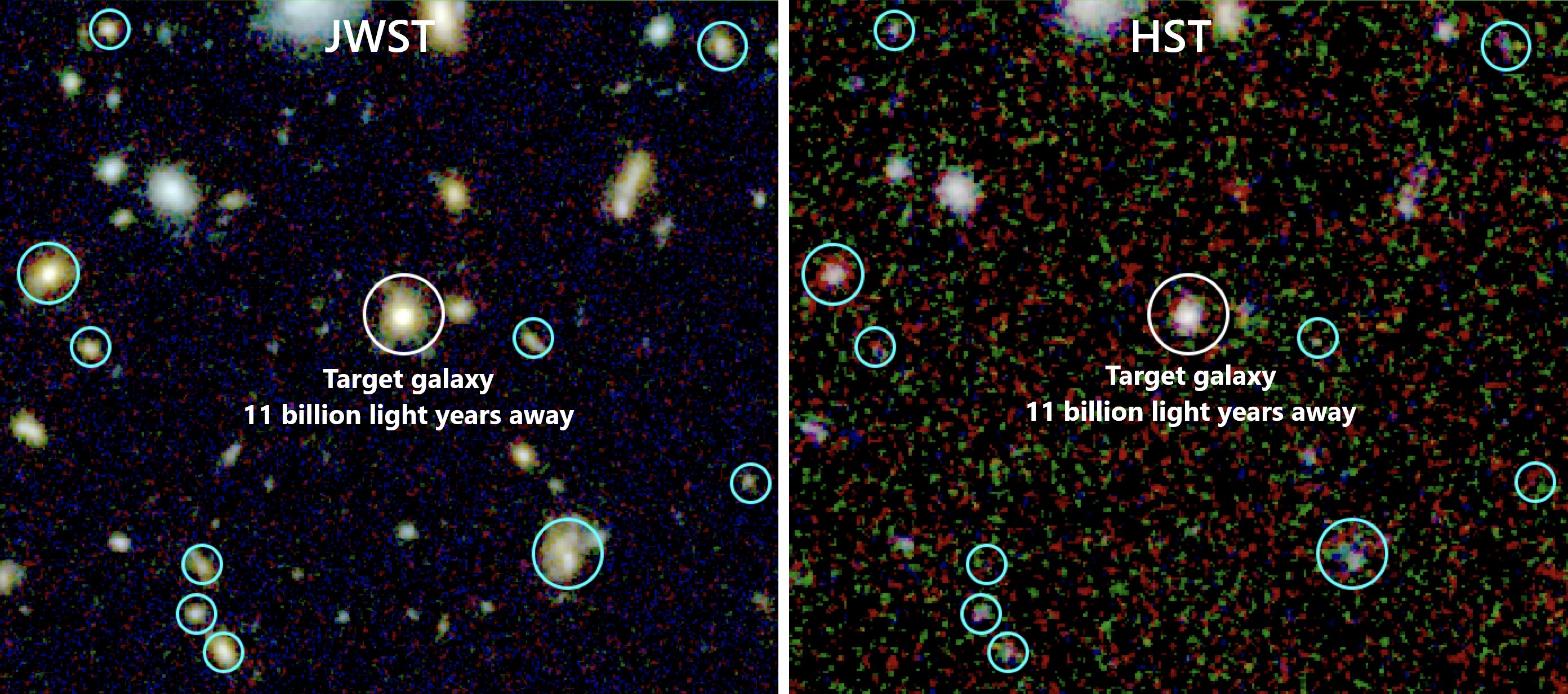New images captured by the James Webb Space Telescope (JWST) have unveiled a stunning revelation about the early universe, shedding light on the explosive star formation ignited by gas-rich infant galaxies over 12 billion years ago. These newly discovered galaxies, emitting intense gas glow, challenge previous assumptions about their formation and provide critical insights into the history of our cosmos.
Astronomers were astonished to find that nearly 90% of the galaxies in the early universe were brimming with an extraordinarily luminous gas that outshone the nascent stars within them. This dazzling phenomenon is characterized by what scientists refer to as "extreme emission line features."
Dr. Anshu Gupta, the lead author of the research paper and a researcher at the ARC Centre of Excellence for All Sky Astrophysics in 3 Dimensions (ASTRO 3D) and the Curtin University node of the International Centre for Radio Astronomy Research (ICRAR), explained the significance of this discovery. "The stars in these young galaxies were remarkable, producing just the right amount of radiation to excite the surrounding gas. This gas, in turn, shone even brighter than the stars themselves."
What's intriguing is the revelation that these galaxies were able to accumulate such copious amounts of gas. The key, as Dr. Gupta's team discovered, lies in the interactions between these galaxies and their neighboring counterparts. These close encounters led to the cooling of gas and triggered intense episodes of star formation, resulting in the striking extreme emission features.
This groundbreaking discovery was made possible by the exceptional capabilities of the James Webb Space Telescope. Dr. Gupta praised the instrument, saying, "The data quality from the James Webb telescope is exceptional. It has the depth and resolution needed to see the neighbors and environment around early galaxies from when the universe was only 2 billion years old."
Previously, the study of galaxies from this early period in the universe's history was incredibly challenging, as many stars had yet to form, and there were far fewer galaxies to observe. "Prior to JWST, we could only really get a picture of really massive galaxies, most of which are in really dense clusters making them harder to study," Dr. Gupta explained. "With the technology available then, we couldn't observe 95% of the galaxies we used in this study. The James Webb telescope has revolutionized our work."
This discovery has confirmed previous suspicions that these extreme galaxies serve as indicators of intense interactions in the early universe. Associate Professor Tran, another author of the study, emphasized the importance of JWST's role in confirming their hunch.
The research was reliant on data from the JWST Advanced Deep Extragalactic Survey (JADES) survey, which employs deep infrared imaging and multi-object spectroscopy to explore the earliest galaxies in the universe. This remarkable finding paves the way for more profound insights into the cosmic past.
Ravi Jaiswar, a Ph.D. student at Curtin University/ICRAR and ASTRO 3D, highlighted the significance of the research's findings: "What's really exciting about this piece is that we see emission line similarities between the very first galaxies to galaxies that formed more recently and are easier to measure. This means we now have more ways to answer questions about the early universe, a period that is technically very hard to study."
Professor Emma Ryan-Weber, Director of ASTRO 3D, stressed the relevance of this research to the study of the origins of elements that comprise our everyday lives on Earth.
The findings of this remarkable research have been published in The Astrophysical Journal, marking a significant step forward in our understanding of the early universe and the cosmic processes that shaped it.







0 Comments